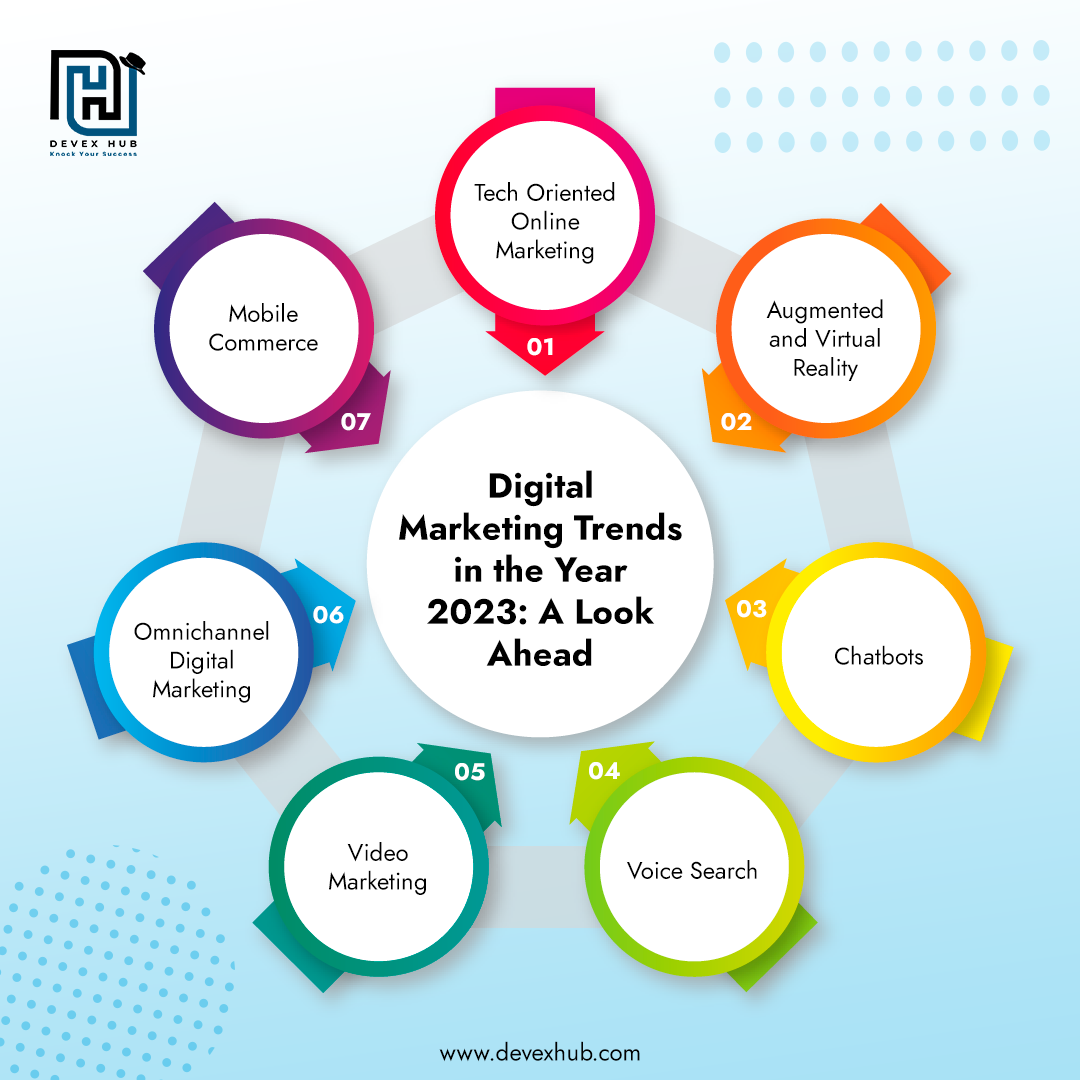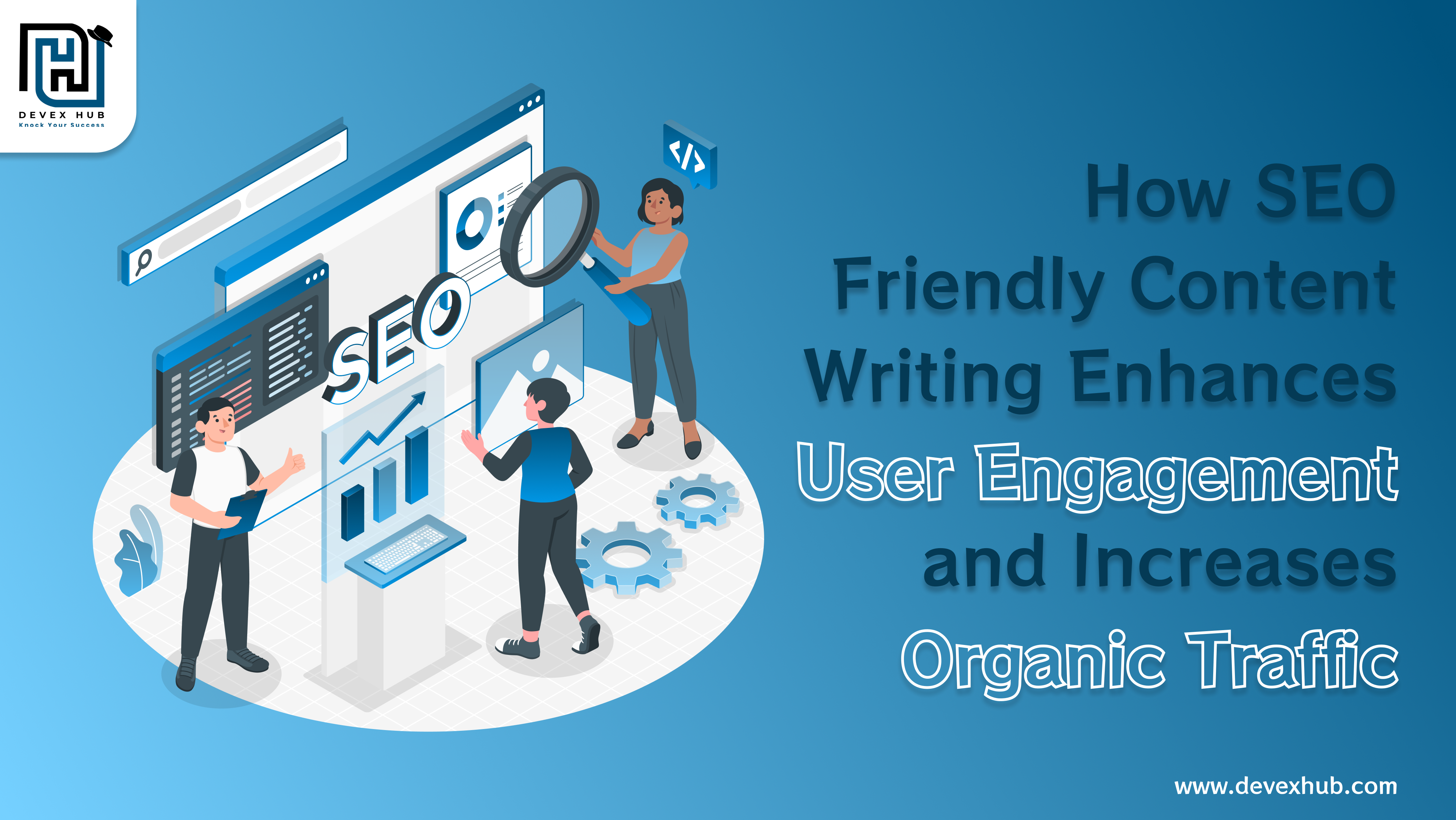Digital Marketing Trends in the Year 2023: A Look Ahead

As we enter the new year, marketers and businesses need to stay up-to-date with the latest trends in digital marketing. The digital marketing world continues to evolve at a rapid pace. And staying up-to-date with the latest trends and developments is essential for businesses to succeed in the digital landscape. Are you ready to get started and stay ahead in the digital marketing game this year? You will need to be if you want to change your brand’s digital marketing game this year.
And to help simplify things a little, we will explore some of the top trends that are expected to shape the world of digital marketing in the coming year.
Tech Oriented Online Marketing:
The use of artificial intelligence (AI) in online marketing is expected to grow significantly in the coming years, and 2023 is no exception. AI technology allows marketers to automate and optimize various tasks, such as data analysis and personalization, to improve the effectiveness of their campaigns. With its ability to analyze large amounts of data quickly and accurately, AI can help marketers make more informed decisions and deliver more personalized and relevant marketing messages to their target audience.
Also, as AI technology continues to evolve and become more accessible, we can expect to see more businesses using it to enhance their online marketing efforts.
Augmented and Virtual Reality :
Augmented reality (AR) and virtual reality (VR) use computer-generated images and sound to enhance or create a sensory experience for the users. AR technology overlays digital information on top of the user’s real-world view, while VR technology creates an immersive digital environment. AR and VR are becoming increasingly accessible and affordable, and businesses are starting to incorporate them into their marketing strategies to enhance the customer experience and drive engagement.
For example, IKEA, an MNC already uses augmented reality for interactive product demonstrations and virtual try-on, while VR is used to create immersive brand experiences and virtual events. Marriott International has already made use of virtual reality for event organizers, and customers can get a realistic idea of how their event could look with a VR-powered headset. As these technologies continue to develop, we can expect to see more businesses using AR and VR in their digital marketing efforts.
Chatbots:
Chatbots are computer programs that use natural language processing (NLP) to simulate human conversation. They are commonly used in customer service to provide immediate responses to common questions and issues. In 2023, an increase in the use of chatbots in digital marketing is very evident, as they can be an effective way to engage with potential customers, provide personalized recommendations, and even facilitate purchases. As AI technology continues to improve, chatbots will become more sophisticated and able to handle a wide range of interactions with customers.
Voice Search:
Voice search uses voice commands to search for information on the internet, typically using a voice-enabled device such as a smart speaker or smartphone. The use of voice search is already popular and would continue to grow.
As a result, marketers will need to optimize their content and websites for voice search to ensure that their brand is easily found and accessed via these platforms such as Siri and Alexa. It may involve using long-tail keywords and natural language, and providing clear and concise answers to common search queries. By optimizing for voice search, businesses can improve their visibility and reach on these platforms and better engage with their target audience.
Video Marketing:
Video marketing is already becoming increasingly popular as a digital marketing strategy. With the rise of online video platforms, such as YouTube, Vimeo, TikTok, and many others. And the widespread use of smartphones and other mobile devices, it has become easier for businesses to create video content and share it with their target audience.
Moreover, the rise of social media has provided businesses with more opportunities to share their videos and engage with their audience. According to a recent survey, 85% of businesses are using video as a marketing tool, and 74% of those businesses report that video has helped them to increase their sales. Video also has been shown to improve customer engagement and increase brand awareness, making it an effective and popular tool for businesses looking to grow their online presence.
Omnichannel Digital Marketing:
Omni-channel digital marketing strategy uses multiple channels such as email, social media, and websites to reach and engage with the audience. The goal of omnichannel marketing is to provide a seamless and consistent experience for customers across all channels, regardless of whether they are interacting with a business through their website, social media, email, or other platforms. It allows businesses to build stronger relationships with their customers and provide a more personalized and tailored experience.
Omnichannel marketing improves customer engagement and drives sales, as it allows businesses to connect with their audience in multiple ways and on multiple devices. With the rise of smartphones and other mobile devices, omnichannel marketing is more significant than ever, as it allows businesses to reach their customers wherever they are, regardless of the device they are using.
Mobile Commerce:
Mobile commerce, also known as m-commerce, is the buying and selling of goods and services through mobile devices, such as smartphones and tablets. With the widespread adoption of mobile devices and the growth of mobile internet access, mobile commerce has become an essential part of the online shopping experience.
As more and more consumers turn to their smartphones and tablets to shop online, businesses will need to focus on providing a seamless and user-friendly mobile shopping experience. As a result, businesses are using mobile-optimized websites and apps to make it easy for customers to shop on the go, and many are offering mobile-exclusive deals and promotions to drive sales. Businesses that want to remain competitive in the e-commerce market must make sure that their mobile offering is up to par, with a user-friendly mobile website and app that makes it simple for customers to browse, shop, and check out. Mobile commerce is predicted to grow even more in the upcoming years.
Stay Ahead of the Curve in 2023:
In conclusion, as technology advances and consumer behavior shifts, marketers, especially digital marketing and PPC Companies in India, must stay updated on the latest trends and techniques to effectively reach and engage their audiences. The continuous development of AI and automation, the increasing significance of user-generated content, and the growing application of micro-moments and personalization in marketing campaigns are some significant trends to monitor in the upcoming years. Businesses and marketers may position themselves for success in 2023 and beyond by following these trends and adjusting to the evolving nature of digital marketing.

.png)
.png)
 (1).png)

.png)
Comments
Post a Comment